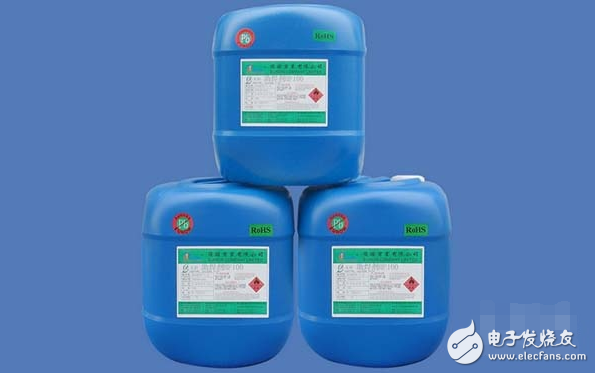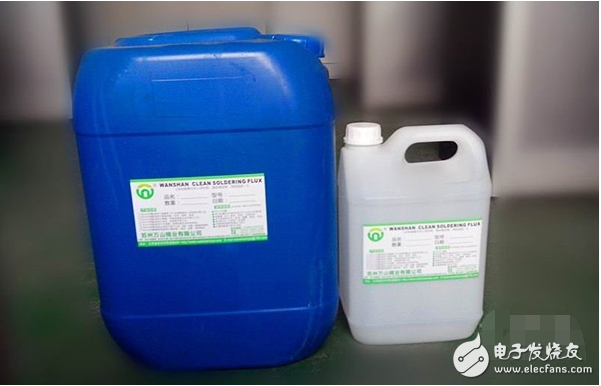Welding is a process that is required in many construction sites or factories. In some cases, the quality of the welding directly affects the quality of the product. In some important places, the quality of the welding directly affects the safety. In some industries, such as computers, instruments, home appliances and other industries, the precision of the welding process is relatively high, and the flux has been widely used in the welding of these industries. Flux is divided into lead flux and lead-free flux. What is the difference between the two fluxes?
The so-called lead-free and lead-free soldering refers to the solder containing lead-free solder used in soldering. Conventional brazing is a lead-tin alloy solder, which has a low melting point, good fluidity, and good electrical conductivity after soldering, and has been widely used. However, lead is a metal that is harmful to human health, which has led to the topic of lead-free soldering.

In fact, the main reason is the difference in soldering temperature. The soldering temperature required for lead-free tin wire is higher, generally around 250 degrees, while the soldering temperature of ordinary tin wire is 180 degrees, so the soldering temperature of lead-free soldering station is higher. And the lead-free soldering station heats up faster. There are of course exceptions. In lead-free solders, there are also low-temperature solders that have a lower melting point than lead-based solders. But the price of this low temperature solder is quite expensive.
In theory, lead-free solder joints can be soldered with lead-free soldering stations because the temperature of the lead-free soldering station can reach the melting point of leaded solder. However, no one actually uses this, because once the lead solder is soldered on the lead-free soldering station, the lead-free soldering station is contaminated and can no longer be lead-free environmentally friendly products.
Conversely, lead-free soldering stations cannot be soldered with lead-free solder because the temperature of the lead soldering station may not reach the melting temperature of the lead-free solder.
1. Lead-free and lead-free are process requirements and are differentiated by application.
2. Its composition is complex and diverse.
3. The active agent, film-forming substance, additive, and solvent are essential components.
4 However, lead-free is the trend, it is environmentally friendly, and ROHS is an industry standard with different practical ranges.
Lead-free flux is based on the requirements of today's lead-free production line! It is not distinguished by the presence of lead and no lead like solder paste! ~Because of the poor lead-free wettability and lead-free performance, higher activity is required to ensure good quality! And lead-free production lines, for some simple motherboards, you can use the so-called lead-lead flux, you can also call the lead-lead flux you use at that time. . However, pay attention to other indicators of lead-free requirements!
In fact, in simple terms, the flux you use in lead-producing lines is called lead flux, and the flux used in lead-free lines is called lead-free flux! As long as the quality is OK! ~ However, it is also necessary to pay attention to the use of lead-free production lines, but also pay attention to ROHS and other lead-free requirements!
If you look at the results, the lead-free FLUX has a higher temperature requirement. The reason is that the temperature of the lead-free tin is increased, and the requirements for the thermal shock of the parts we use are constant, so there is no According to lead FLUX, in fact, lead-free FLUX can be used as long as it meets ROHS requirements. If you use FLUX in lead process to meet this requirement, it can be used in lead-free process. In fact, there is no lead-free FLUX. Say, I know that the current industry's real ROHS FLUX is water-based, but its process is not perfect enough, most companies still use rosin type, it is actually toxic, but for the product, it It is environmentally friendly.
Common lead-free solders: · Sn-Ag (tin + silver, 96-98% tin) · Sn-Cu (tin + copper, 96% tin) · Sn-Ag-Cu (tin + silver + copper, 93-96 % tin)· Sn-Ag-Bi (tin+silver+铋, 90.5-94% tin)· Sn-Ag-Bi-Cu (tin+silver+铋+copper, 90-94% tin) 63/37 leaded The solder melting point was 183 ° C and the freezing point was also 183 ° C.
Note: This solder does not appear colloidal [the same temperature point from liquid cooling to solid (or vice versa)]. The 60/40 lead solder bath has a melting point of 191 ° C and a freezing point of 183 ° C. Note: This solder has a gelatinous state in the 8 °C range [temperature range required from liquid cooling to solid state (or vice versa)].
Lead-free solder melting points range from 217 ° C to 226 ° C. Lead-free solder contains no lead and has a higher melting point than conventional (63% tin +37% lead) solder
Lead-free flux handling precautions1. It is strictly forbidden to mix with other kinds of flux and thinner.
2. When used for closed spray welding, it is not necessary to use * diluent. Spray cans, spray nozzles should be cleaned frequently.
3. For dip soldering, the flux in the dip soldering bath or foaming tank should be drained to clean the dip soldering tank after one week of continuous use.
4. For circuit boards with severe oxidation or lead pins, it is recommended to solder after processing.
5. Reasonably adjust the amount of immersion liquid; the foaming height is soaked to make the flux evenly distributed on the circuit board, and the IC socket should be carefully adjusted.
6, welding station, cleaning station should have ventilation.

In fact, no matter what industry, no matter what work, security is the primary prerequisite. The same is true for welding. Workers who are engaged in welding work are required to keep in mind the safety precautions when using lead-free flux*, and follow the precautions in the work to ensure the quality of work and protect their personal safety. In addition, Xiao Bian said that lead-free flux is a relatively environmentally friendly material, I hope everyone can enhance environmental awareness, no matter what industry, use more environmentally friendly materials.
Product Name: Car DVR
Type: DASH CAM
Angle: 145°
Resolution: 1080P
Function : G-Sensor, Voice Interaction,Build-in Battery
Warranty: 1 Months
Certification: CE
Place of Origin: Guangdong, China
Video resolution: 1920*1080P
View Angle: 145 Degree
CPU: Novatek 99672
Lens: 4-Glass Lens
Max External Memory: TF memory card(8-128G)
Product size:90*33*43mm
Packing box size:158*158*59
PRODUCT ADVANTAGES
We attach great importance to product design
material selection and optimization
INTELLIGENT ANTI-SHAKE
You can get usable images even on mountain roads,and DNR noise reduction makes the images clearer.
CLEAR NIGHT IMAGE
LED`s automatically fill light, The front and rear dual-kons and combine professional technology to process composite images.
driving recorder player, dash cam for car,dash cameras, rear view camera for car, rear view camera and monitor
Jiangmen soundrace electronics and technology co.,ltd. , https://www.soundracegroup.com